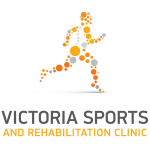During treatment for scoliosis with the Schroth Method and/or Cheneau-Gensingen Bracing, patients may be required to undergo a number of x-rays to assess the magnitude of their curvature. Today X-ray is still the gold standard for identifying and measuring a scoliosis.1 Researchers have calculated that scoliosis patients that have regular exposure to radiation have a.. read more →
The Risser Sign identifies the amount of ossification (the process of cartilage becoming bone) of the human pelvis as a measure of skeletal maturity. The amount of ossification is graded from 0 – 5. The process begins at the front of the pelvis and moves towards the spine. The grades are as follow: Grade 0.. read more →
The Cobb angle is an angular measure of deformity of the spine in the coronal (frontal plane). It is named after American orthopedic surgeon John Robert Cobb, who wanted to find an accurate and consistent measure for the severity of spinal deformities, in particular scoliosis. To measure the Cobb angle you need to: Identify the.. read more →
America’s main medical groups that treat scoliosis have responded to recently released research that confirms that the early and appropriate treatment for scoliosis is effective in halting or minimising the progression of spinal curvature. The joint statement, “Screening for the Early Detection of Idiopathic Scoliosis in Adolescents,” is a collaboration between the American Academy of Orthopaedic Surgeons.. read more →
A lot of people own a foam roller, try it once and don’t try it again because it hurts too much. The ones that stick with them swear by them. So why are they good? In short they work just like a massage. They improve circulation, reduce muscle tension and increase joint mobility and flexibility… read more →
